In this section of our benchmarking we plot two key metrics against each other to see if there is any direct relationship between them.
Firstly, we compare the number of fields on a form with the number of questions asked. As you might expect, the more fields on a form, the longer it takes to complete.
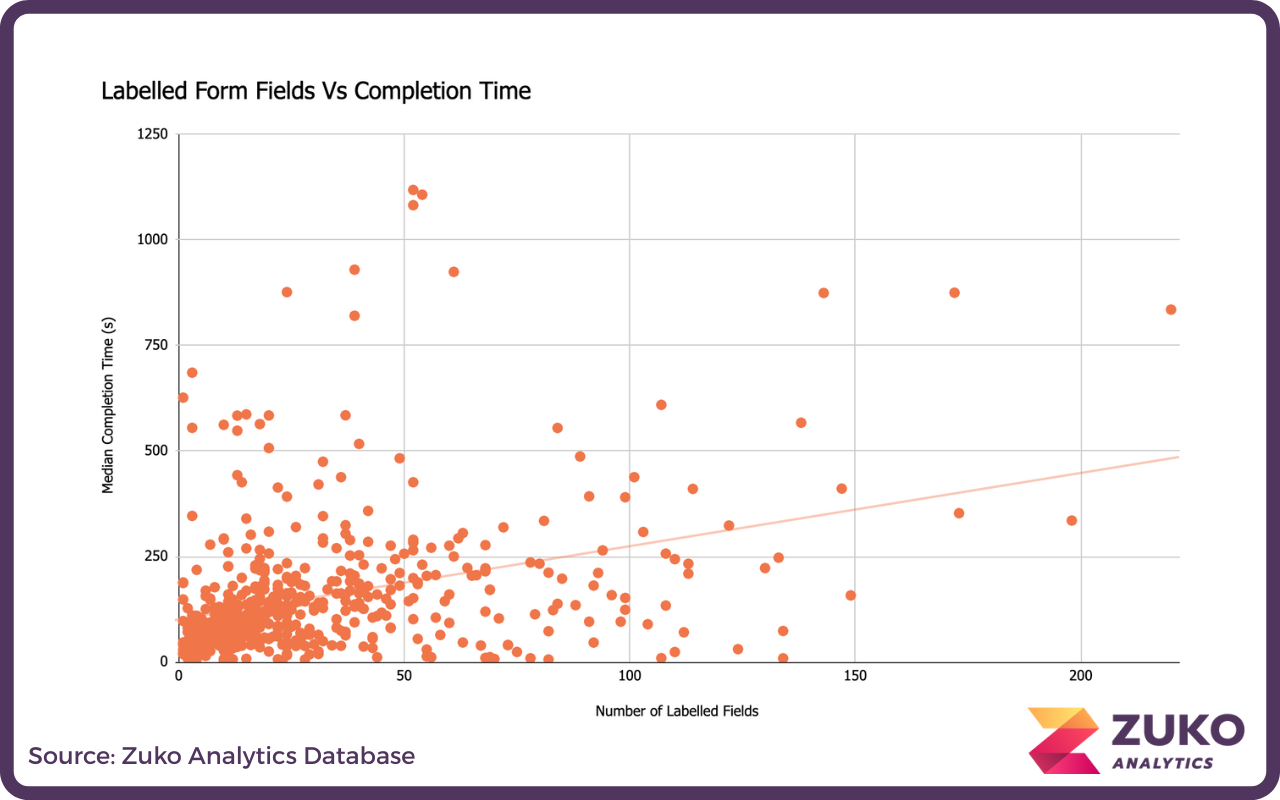
Similarly, the more questions, the more field returns a form is likely to have.
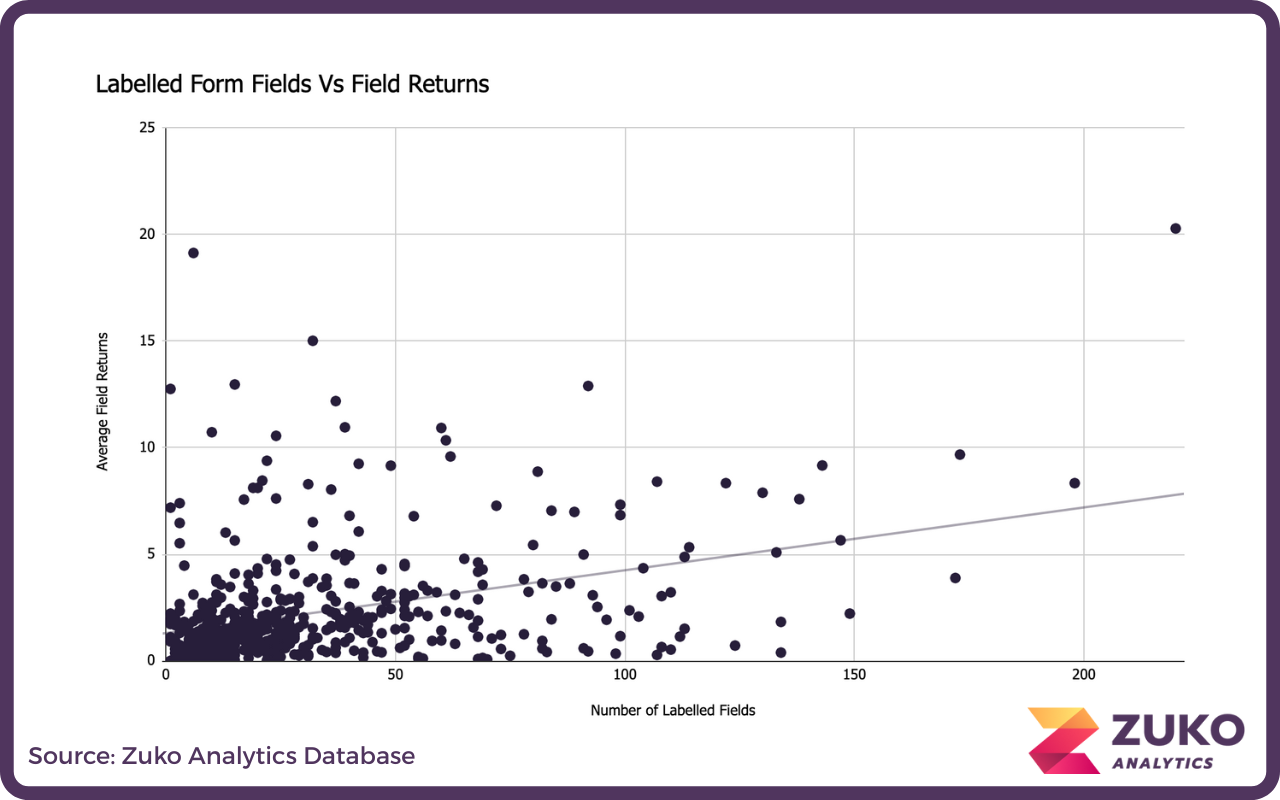
Interestingly, there seems to be a negative relationship between the number of questions asked and the completion rate.

The negative trend is even more marked when we look at the Starter to Completion rate. The more questions, the lower average completion rate.
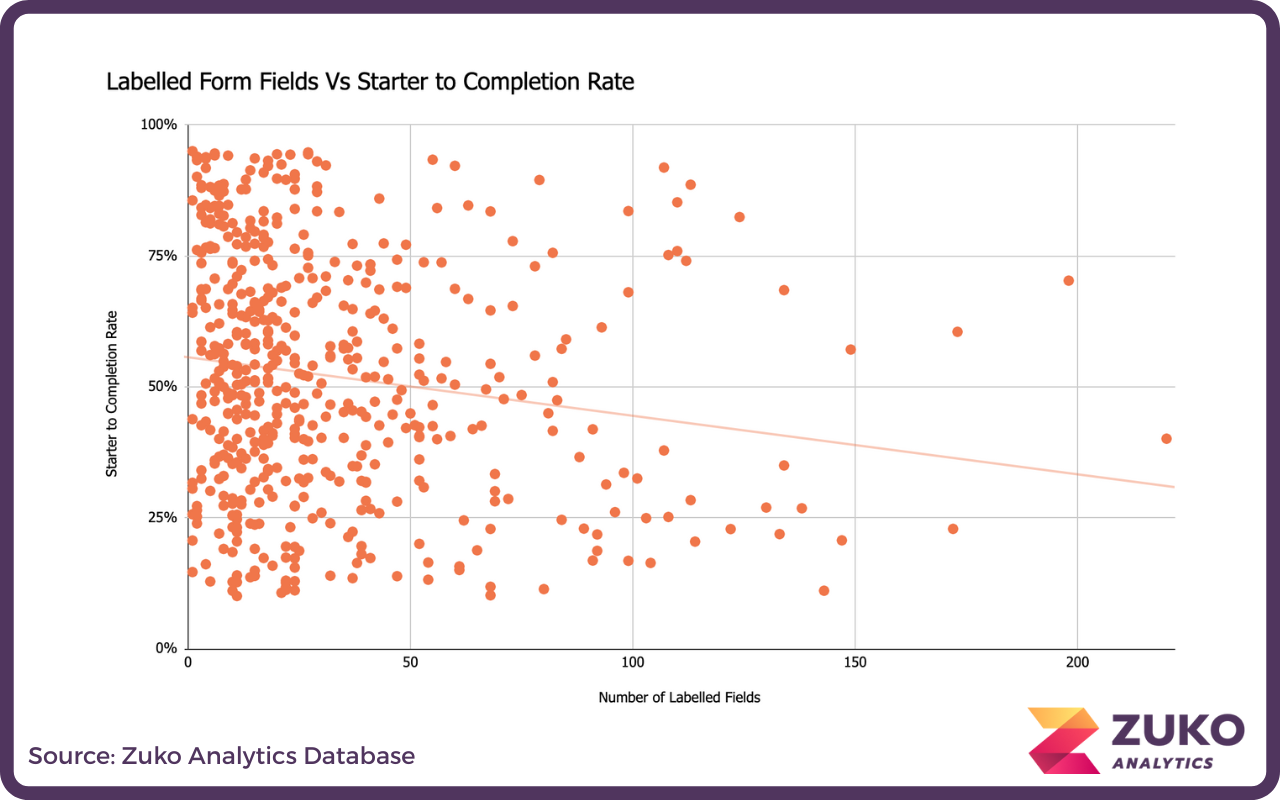
We’ve always used field returns as a proxy for user frustration (having to jump back and forth between fields to make corrections is annoying). This graph makes it clear that this is ultimately related to more form abandonment. The more field returns, the lower the completion rate.
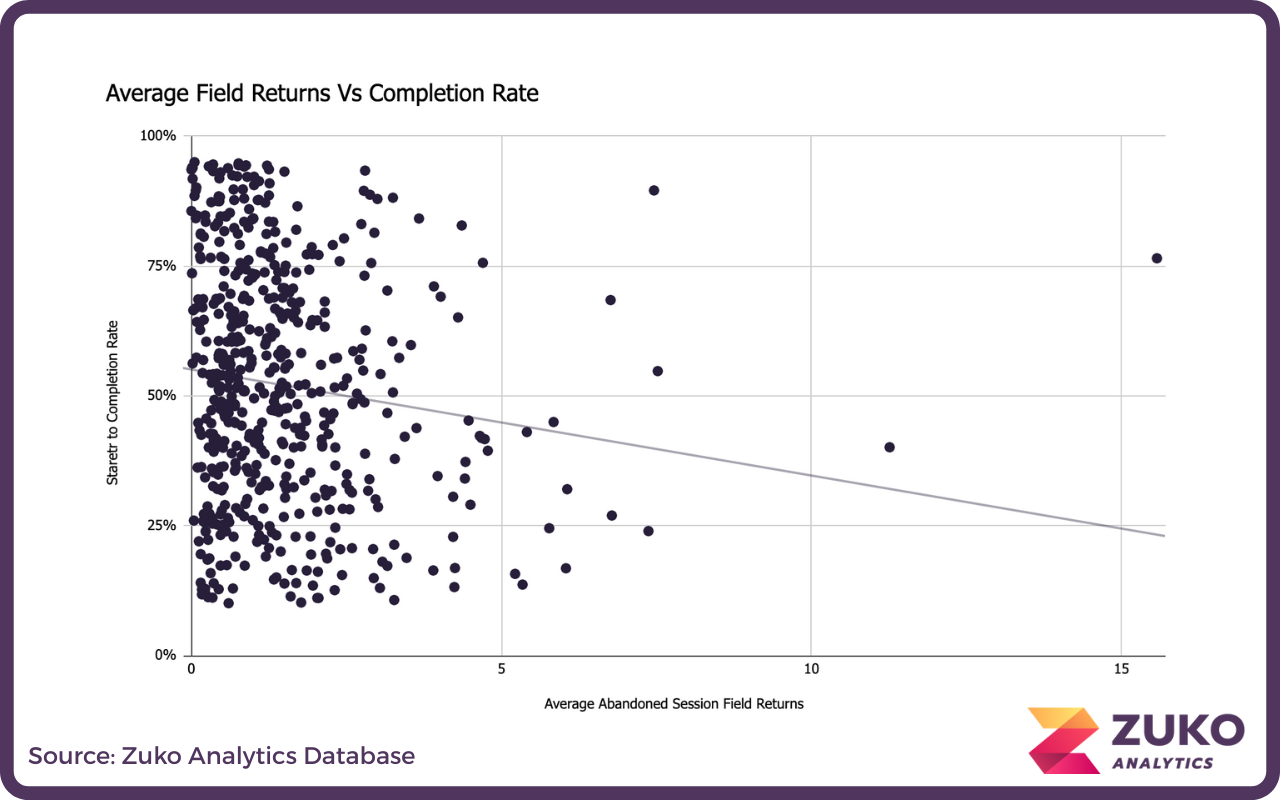
The more field returns the longer people suspend on the form (abandoned sessions).
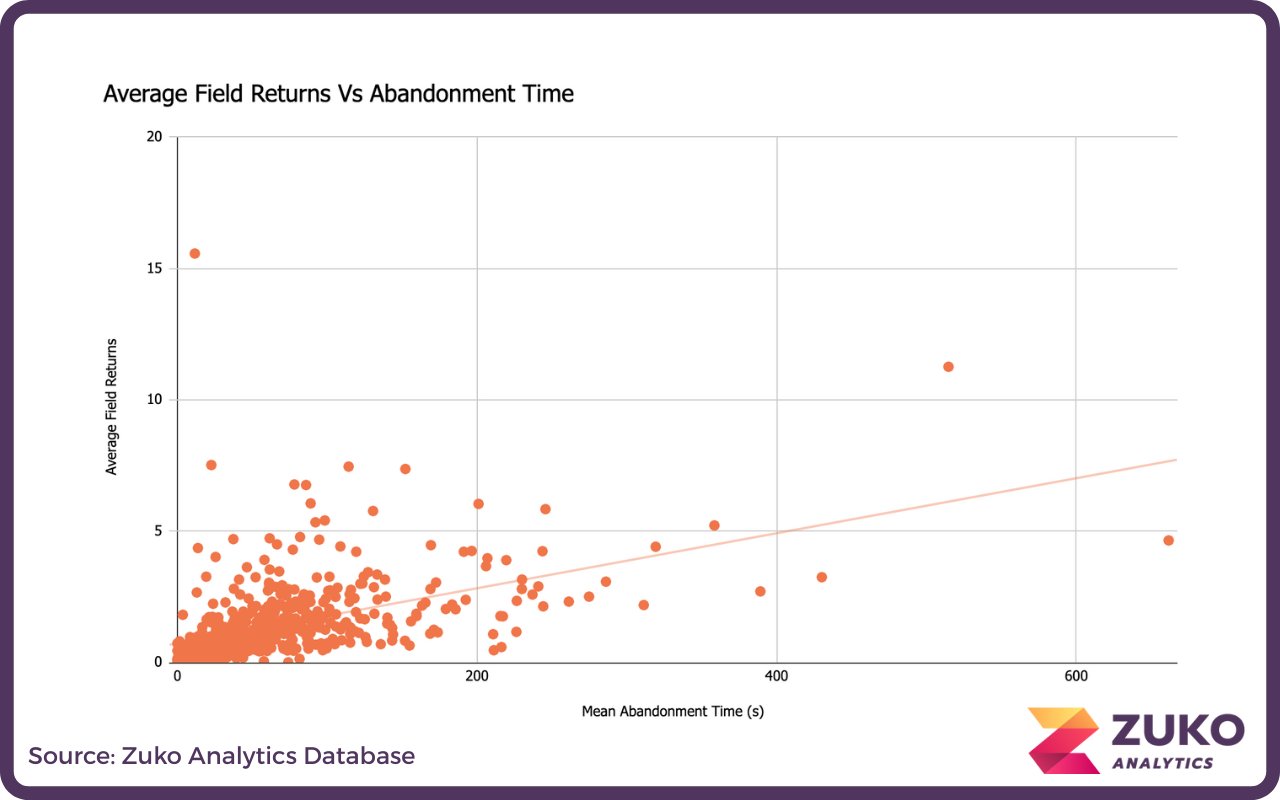
The time it takes to complete a form and completion rate are negatively correlated (perhaps as both are related to the number of questions asked).
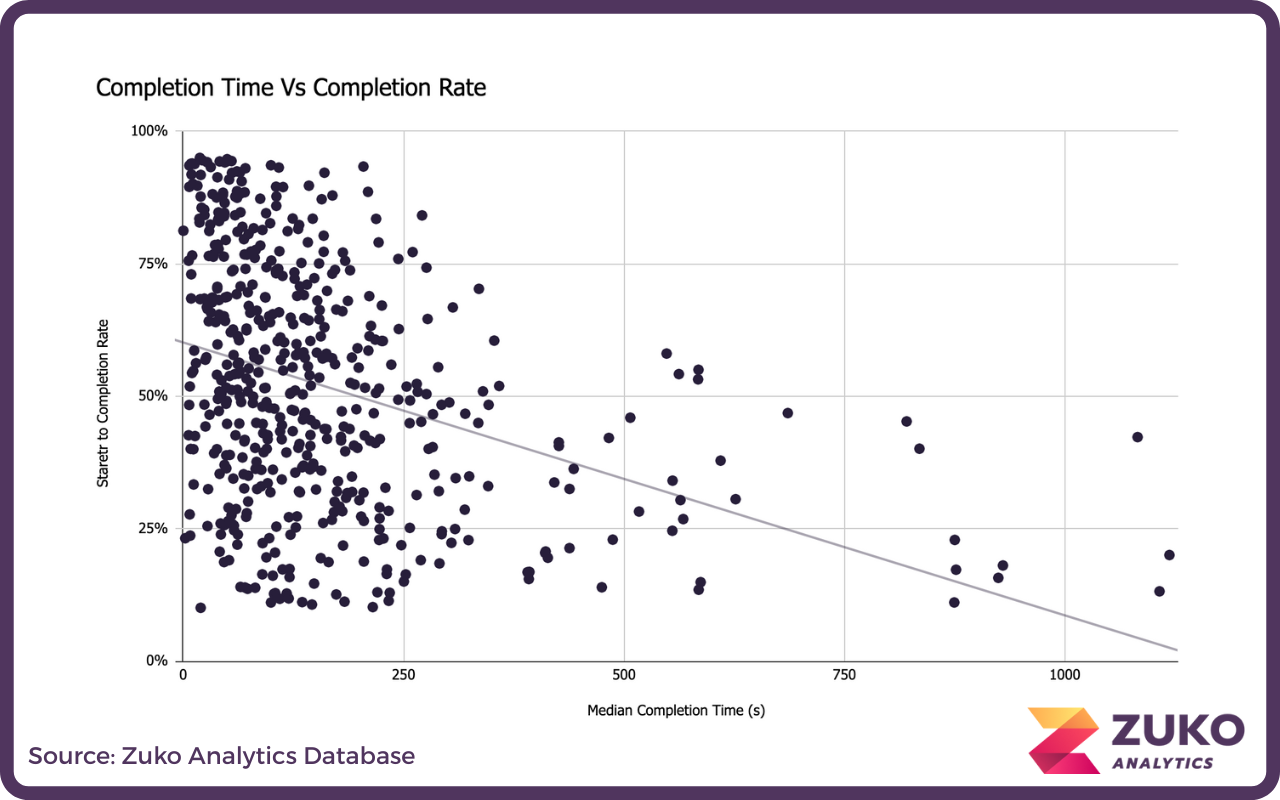
Finally, and unsurprisingly, Starter to Completion and View to Completion have a significant positive relationship.
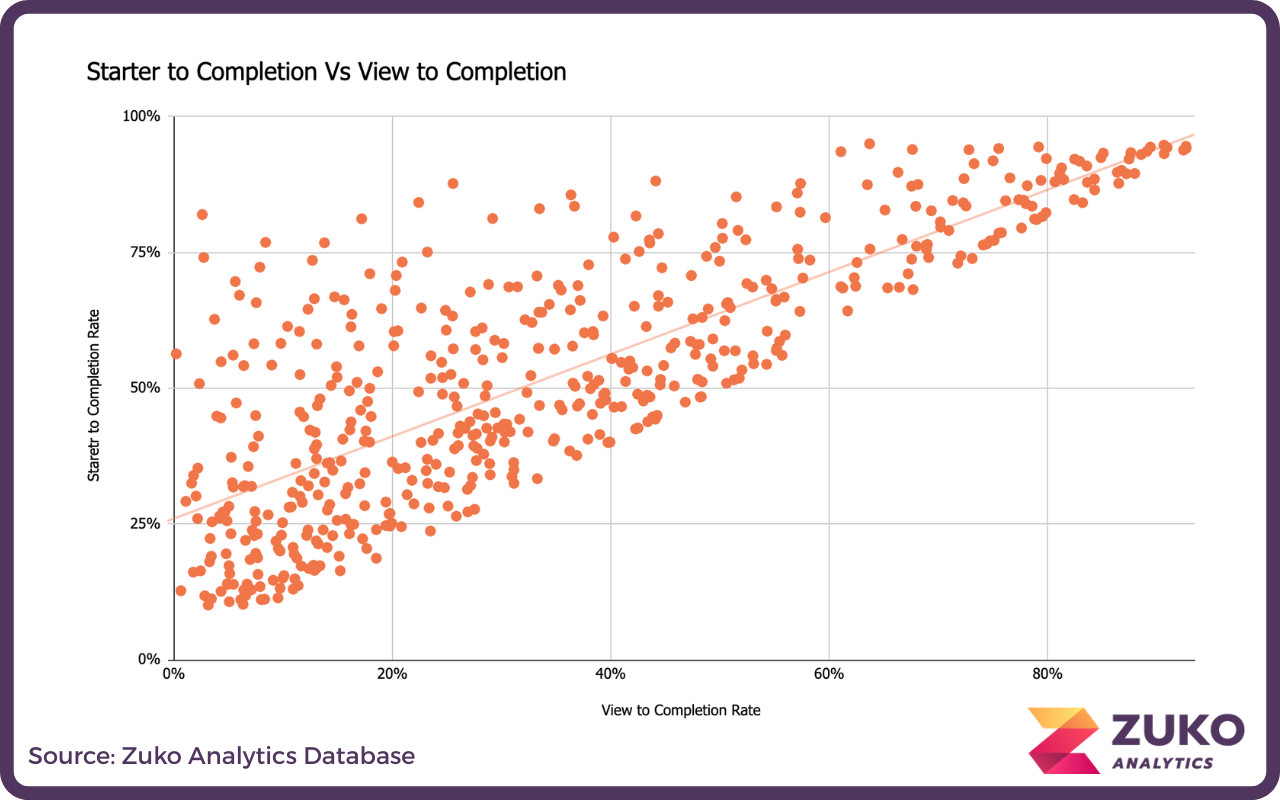
If you have any questions or would like to learn more about Zuko’s benchmarking data or how Zuko can help you improve the completion rate of your forms please contact us on sales@zuko.io
Got any questions or feedback on our data? Please get in touch using the short form below:
View to starter %- The % of form starters as compared to form views - how many people started interacting with the form after viewing it?
Starter to completion rate- The % of form completions when compared to form starters. How many people completed the form after starting it?
Starter to Completion % - of those that started interacting with the form, what % of people successfully submitted it?
View to completion %- This compares the number of form completions to form views - this is often used as a benchmark for how’ good’ a form is, and is also called a Conversion Rate.
Completion time - how long did users spend interacting with a form before submitting it?
Abandonment Time - how long did users spend interacting with a form before leaving?
Field Return - A field return is when a user exits a field after entering some data only to return to it at a later stage in their session. A single field can have multiple field returns, and a session can also have many.
Avg. Field returns- Looking across all sessions, what was the average number of times that a user had to return to fields that they had previously exited. This metrics only consider form starters in its calculation.